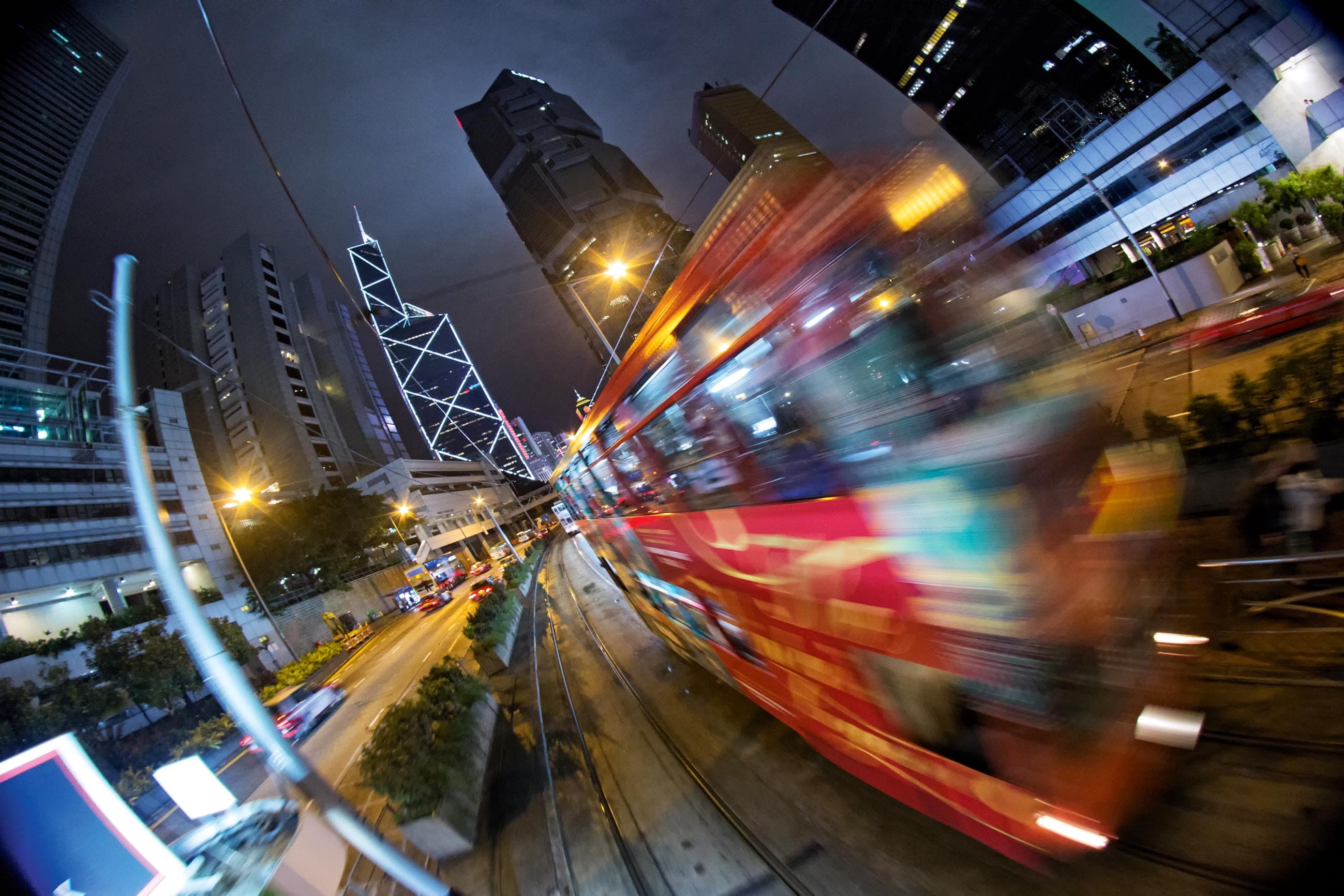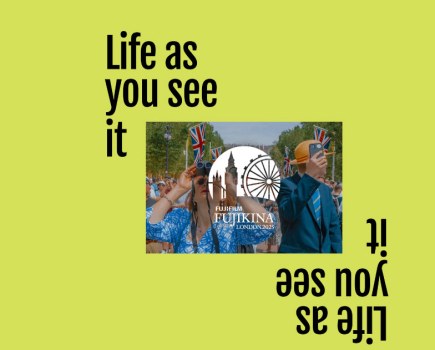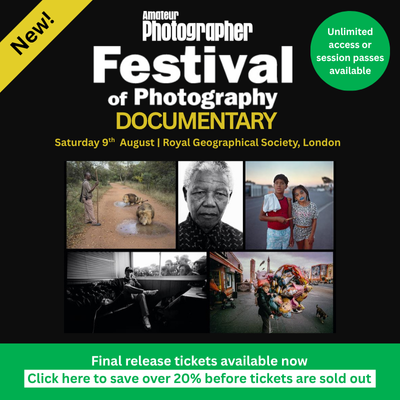In partnership with Nikon

Your guide: James Paterson
James is an award-winning journalist, skilled photo editor and photographer. His work has appeared in countless magazines and books, and in 2014, he was appointed editor of Practical Photoshop magazine. See here for more of his work.

Lighthouse of Cap de Formentor, Mallorca, Balearic Islands, Spain, around sunset. Nikon D810, 20mm, 1/8sec at f/16, ISO 64
A wideangle lens is one of the most useful lenses you can own. By offering a greater field of view, wideangles let you fit more into a frame. As such, they’re beloved by landscape photographers, where big skies, dramatic scenery and interesting foregrounds can all be included in a single, detail-rich frame. But it’s not only landscape photographers who can reap the rewards of a wideangle lens. They’re useful for all kinds of applications, from architectural and interior photography to travel and environmental portraiture. Over the next few pages, we’ll explore some of the key considerations when using a wideangle lens, including how to get the most out of them, how to overcome common problems and how to create expansive photos of all kinds of subjects.
Kit list: what you’ll need
Prime wides: Usually fixed at either 14mm, 20mm, 24mm, 28mm or 35mm, prime wides are typically sharper and faster than zooms, but with a trade-off in versatility.
Fisheye: Covering 180° or more, a fisheye is a special type of wideangle that offers a huge field of view and characteristic bulging distortion.
Zooms: Wideangle zooms offer greater flexibility than primes, especially when composing a frame to arrange both foreground and background neatly.
Tripod: A tripod is especially useful for wideangle photography as it gives you time to perfect your composition and allows for longer exposures.
The basics
Typically, any lens with a focal length of 35mm or less is classed as a wideangle (that’s full frame 35mm, which is an equivalent 23mm on an APS-C sensor camera). The shorter the focal length, the wider the field of view. Of course, many multi-purpose zooms can be used as a wideangle at the short end. Lower focal lengths result in wider fields of view, so you can fit more of the scene in the frame. As such, a wideangle is handy when you simply can’t get back far enough to include everything you want. Focal length also has an effect on the sharpness of your photos. Depth of field is exaggerated with a wideangle. So you can usually achieve front-to-back sharpness across the scene when using a narrow aperture. What’s more, wideangles will usually have a close minimum-focusing distance, which means you can get right up close to your subject, giving the impression of being right in the thick of the action.

A wideangle helps to exaggerate perspectives. Nikon D800, 16mm, 2.5sec at f/16, IS0 100
Wide landscapes
One of the best things about a wideangle is the ability it gives you to include a detailed foreground, distant scenery and big sky all in one frame. However, with such a wide field of view, it can be a challenge to find enough interesting objects to place within it. Landscape photographers will often seek out foreground interest – an interesting rock formation, tree or winding river – that leads the eye towards the distant scenery. It’s this challenge of finding harmony between foreground, background and sky that makes wideangle landscape photography such a rewarding pursuit.

Basalt columns, Giant’s Causeway, Northern Ireland
Exaggerated perspectives
A wideangle of view could be invaluable in situations where you can’t move back far enough to fit everything in with a longer lens. However, there are also more creative applications. A wideangle will help you to exaggerate perspectives, because they change the visual relationship between objects that are closer to the camera and those that are further away. Closer objects can appear unnaturally large, while the distance between them and objects further from the camera is exaggerated. We can use this to creative effect by bringing our lens up close to elements and surfaces in
our scene.
Wideangle challenges
When using a wideangle lens it can be tricky to craft an uncluttered composition. By nature, these lenses let you fit more things in, which can sometimes make it harder to organise everything into a visually pleasing whole. The exaggerated perspective also means that slight changes in camera height can make a dramatic difference to the relationship between foreground and background in your compositions. It helps to pay particular attention to the edges of the frame, as unwanted clutter can easily creep in. A tripod can help us take a more studied approach to composition. While we’re thinking about the edges of the frame, we also need to be cautious about placing subjects near the edges, especially around the corners. Distortion in the corners of the frame is more pronounced, so people can be stretched into unnatural shapes.

The beauty of wideangle lenses is they allow you to capture cramped interiors. Nikon D800, 10.5mm, 1/20sec at f/6.3, ISO 800
Get more from your wide-angle
Portraits
Wideangles aren’t thought of as portrait lenses. The exaggerated perspective makes objects closer to the camera look unnaturally large, which can be unkind to faces, enlarging noses and foreheads. As such, it’s usually best to step back and zoom in to a longer focal length for a more flattering portrait (a focal length of 85mm is regarded as perfect for people). However, the distortion a wideangle creates can be used for comic effect to exaggerate a person’s features or to elongate their limbs. A wide focal length might also be helpful for environmental portraits, where it’s important to show the subject in situ.

African penguins on Boulders Beach in Simon’s Town, South Africa. Canon EOS 5D Mark III, 15mm, 1/500sec at f/10, ISO 500
Wildlife
For obvious reasons, wideangles are not usually thought of for wildlife. But if you want to create an unusual perspective then a wideangle can be a great choice. The field of view will show more of an animal’s surroundings than a longer lens, so it can give more of a sense of the animal’s environment. The challenge is in getting the camera up close to the subject without spooking it. This is where remote releases and Wi-Fi shooting via a phone can make a real difference. We can set the camera up on a tripod with a few enticing snacks near the lens, then hide nearby and wait.
Travel
One of the best things about wideangles is the feeling they give the viewer that they could almost step into the scene. So a wideangle – or versatile zoom with a wide end – is a great lens to have in your bag when travelling. A wide will allow you to capture vibrant scenery, shoot in cramped interiors and – if you’re lucky enough to own an underwater housing – they’re even helpful underwater, as they counteract the magnifying effect of shooting through the water.
Documentary
Documentary photography is about telling the story of the scene unfolding in front of the camera. A wideangle can be a powerful tool, simply because it allows us to compose both close-up foreground details with expansive, detail-filled backdrops. What’s more, when used up close to a subject, wideangle lenses offer a visceral in-your-face perspective. It places the viewer in the thick of things, which can create a powerful reaction.

Using filters
A selection of filters can be very useful when shooting with a wideangle. If you’re including both land and sky – as is often the case when shooting wide – then a graduated filter can help to balance the two. A polariser can also be useful for enhancing skies and cutting through reflections in foliage, but be careful when shooting blue skies, as the wide field of view might result in uneven dark patches, where the polariser affects one part of the sky more than another. Lens flare can also be an issue when pairing filters with a wideangle as the lens hood must usually be removed – so if shooting in bright sunlight be sure to shade the front element of the lens.

Barrel distortion
There’s an inherent difficulty in fitting a wide field of view – one that naturally extends in a hemisphere around the camera – and cramming it onto a flat rectangle. The edges have to be compressed so that everything fits. This is why wideangles are particularly susceptible to barrel distortion, where naturally straight lines within the frame appear to be bowed or bulging. It’s more obvious in landscapes and seascapes that feature straight horizons, and architectural shots where the edges of buildings have straight lines.
Quality wideangle lenses will have less distortion, but every lens suffers to some extent. Thankfully, correcting distortion is a simple step if you have software like Photoshop, Lightroom or DxO ViewPoint. The lens used to take the
photo is automatically detected (most of the time, if not you can select the lens manually), and a correction for barrel distortion is applied.

Converging verticals
When we tilt a wideangle lens up to shoot a tall building – the vertical lines tend to collapse in on one another. Known as converging verticals or keystoning, the optical effect is especially apparent with wideangles, simply because the perspective is so exaggerated. One option is to correct for the converging verticals. At the time of shooting, find a straighter angle to shoot from, by moving further backwards or higher so the upward camera angle is less acute. Corrections can also be made in post-production.
The excellent Upright command found in Lightroom’s Develop Module (and also in Photoshop’s Camera Raw plugin) can detect and correct verticals as well as fix wonky horizons. The second option is to embrace the visual effect and use it to enhance your composition. In a visual sense, diagonal lines are more aesthetically pleasing than horizontals or verticals. You can take advantage of this by composing dynamic upward angles with your wide lens.

A moving tram on Hong Kong Island, showing creative use of fisheye lenses. In the background you can see the Bank of China. Canon EOS 5D Mark III, 1/10sec, ISO 3200
Fisheye lenses
Most lenses are designed to correct distortion, so that straight natural lines in a scene will appear straight in the resulting image. Fisheye lenses offer a different approach. Distortion correction is embraced in the attempt to cram as many degrees of view as possible into the frame. The result is a bulging, hemispherical image where anything outside of the centre of the frame appears very distorted. As such, a fisheye isn’t for everyday use, but it can give images a dynamic feel that can be used to great effect on certain subjects such as sports and action, or city scenes where the otherworldly distortion can transform angular straight lines into more abstract curved shapes.

Tilt–shift wideangle image of a train station in Munich, Germany. Sony RX100 II, 10.4mm, 1/60sec at f/2, ISO 1600
Tilt–shift wides
A tilt-and-shift wideangle lens allows the photographer to counteract the problem of converging verticals by changing the alignment of the front of the lens. This is the ‘shift’ part, and it’s the reason why architectural photographers love tilt-shift wides. It allows them to take expansive photos of interiors without skewing the vertical lines of the walls. The shift control offsets the lens up or down, giving the effect of changing the camera position along the vertical plane. We can also rotate the orientation of the lens body, so that we can tilt on the vertical axis and shift on the horizontal.









